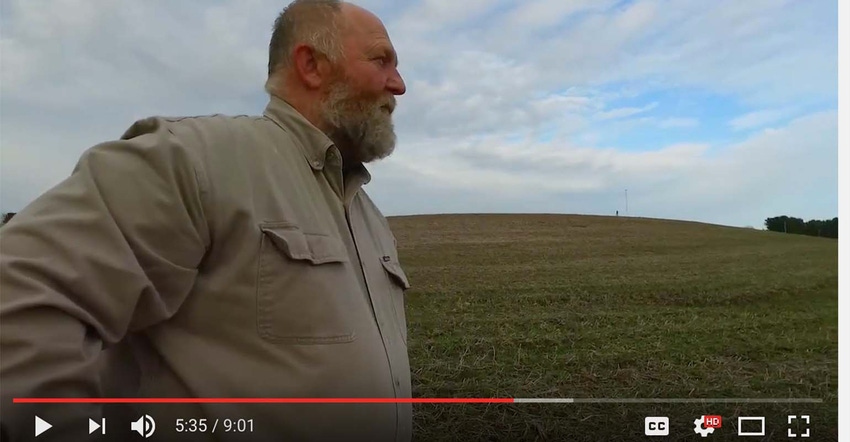March 7, 2017

Wisconsin farmer Andy Bensend is the winner of the 2017 National Conservation Legacy Award.
Prior to Bensend’s recognition as the program’s national winner at the annual ASA Awards Banquet on March 3, he was named the Midwest Regional winner of the Conservation Legacy Award. The national award winner is chosen from three regional winners. The other 2017 regional winners were Keith Masser, Sacramento, Pa. (Northeast Region) and Matt Griggs, Humboldt, Tenn. (South Region).
The Conservation Legacy Awards program is a national program designed to recognize the outstanding environmental and conservation achievements of soybean farmers, which help to produce more sustainable U.S. soybeans. Along with ASA, the program is co-sponsored by BASF, Monsanto, Corn & Soybean Digest magazine, the United Soybean Board/Soybean Checkoff and Valent.
A video featuring each of the regional conservation winners can be viewed here.
Bensend has found ways to improve the conservation and sustainable practices on his farm for over 30 years. He is not shy about sharing what he has learned with other farmers and often hosts events and demonstrations on the land he farms in Northwest Wisconsin.
Over the years, Bensend has developed a successful formula based on no-till, integrated pest management, crop rotation, cover crops and perseverance. Today, his enterprises include more than 4,000 acres of primarily corn and soybeans using no-till or strip-till practices; he also has a custom farming business that serves area dairy producers, in addition to a consulting service that assists area farmers with agronomy and nutrient management planning.
A key to Bensend’s farming success has been the ability to restore productivity to land that has been depleted by erosion or other factors.
“My strategy has been really quite simple,” Bensend said. “Number one is to reduce tillage. My goal is to eliminate tillage almost entirely. The second is to correct deficiencies. If we can use livestock waste, manure is a great way to correct some of those deficiencies."
Bensend further explained that his next step is to restore soil quality. In the last five to seven years, he has significantly increased the use of cover crops in his operation to achieve this objective. Bensend seeds cereal rye, winter wheat or barley as cover crops to protect the soil until planting time.
“It is possible to be conservation minded and to do everything right from a soil quality and soil health standpoint without forcing yourself to operate at a loss,” Bensend said. “Over time, we have watched it happen, seeing our yields improve at a faster rate than our contemporaries who farm conventionally. There is no doubt conservation and profit can co-exist.”
Source: ASA
You May Also Like




